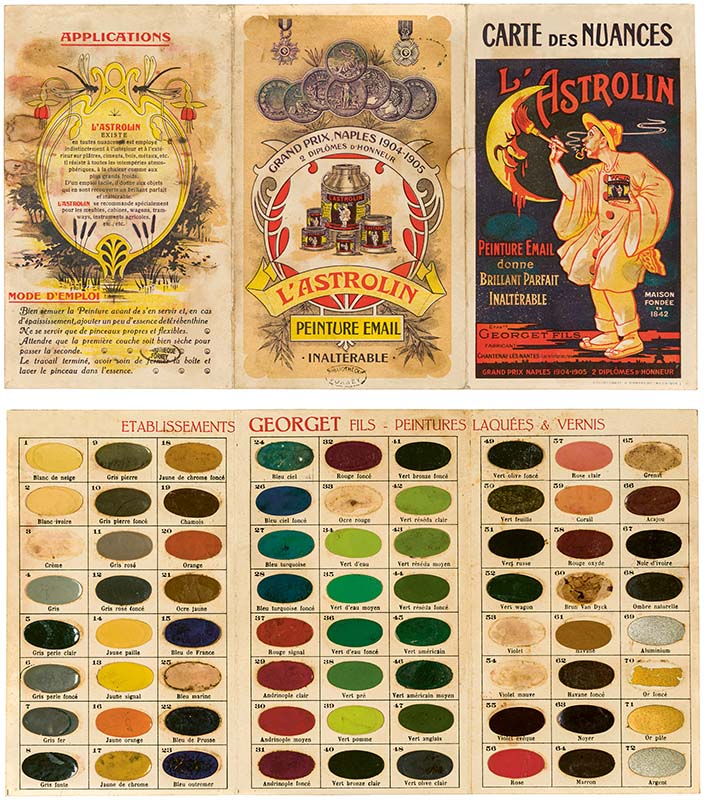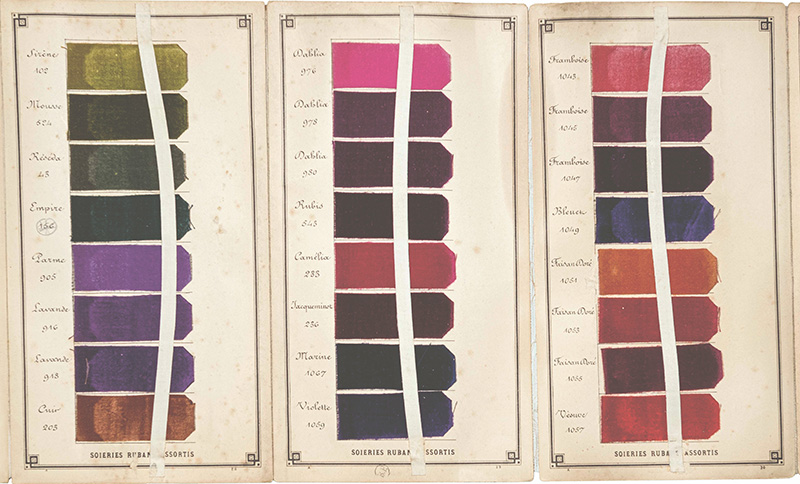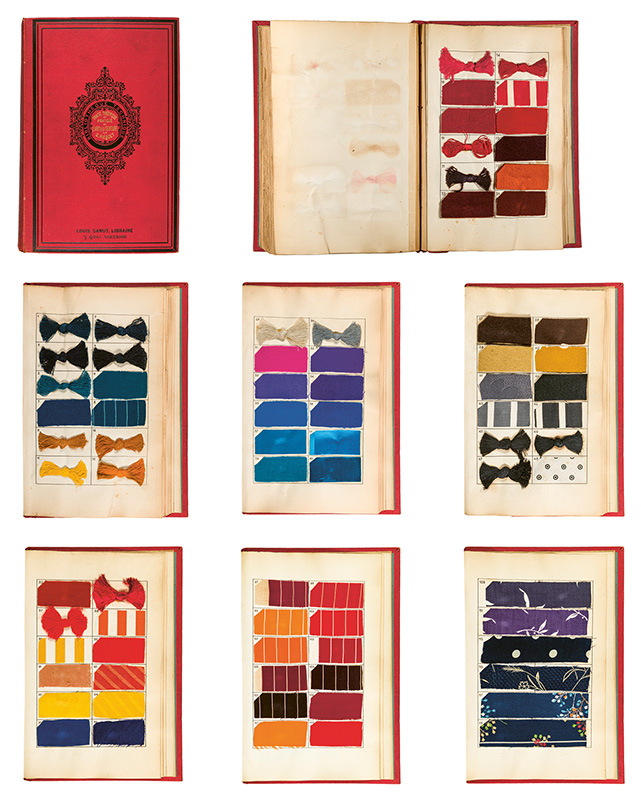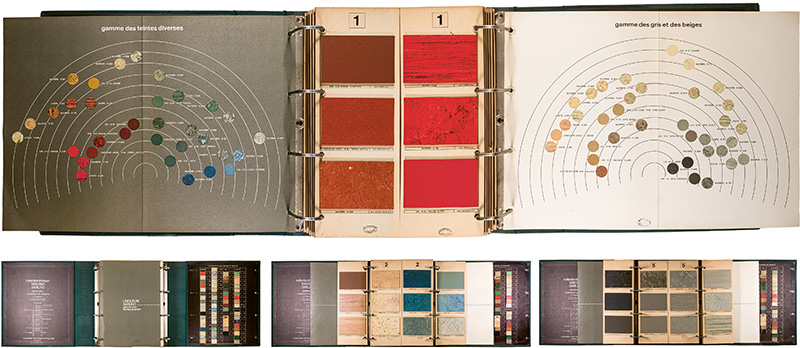Grasping Color: A Material History of Color Charts
by Kate Burnett Budzyn
Anyone who has thumbed through a paint deck at a hardware store will know the simultaneously delightful and agonizing experience of selecting a color. Butter yellow, lilac grey, eau de Nil, chocolate: infinite hues and their synesthetic names cascade, offering worlds of possibility and pleasure from the space of their small squares on a card.
The reference tool at the center of this experience—the color chart—accomplishes a complex act of translation in humble form. As anthropologist and color historian Anne Varichon explains in her new book, Color Charts: A History, published earlier this year by Princeton University Press, these objects have existed across the modern era because of a universal need to communicate something that is very hard to communicate. Color is impossible to describe, except in terms of comparison. “Color is a characteristic that evades language as well as memory,” Varichon writes, “and can only be grasped by example” (15).
Varichon’s seven chapters, organized by era, deal frequently with technical challenges of producing not just the substance being represented in color charts—from 1780s Cévennes silk to 1930s car enamel—but also the charts themselves. Across the history of color charts, some products, like varnishes, more easily represented themselves: they could be applied directly as samples. Other substances, like urine and dyes, were subject to fading, and some specimens, like feathers, were difficult to contain within the limited space of a chart. Authors and manufacturers thus constantly experimented with the form, leaving behind a body of historic ephemera that is wild in material range and visually spectacular. The book’s large, gorgeously printed reproductions allow readers to interact with these objects on an intimate level.
During the enlightenment, Varichon explains, naturalists sought means of observing, identifying, and describing the color of specimens consistently across disciplines. The Werner-Syme nomenclature finally accomplished this task in 1814. A collaboration between a mineralogist (Abraham Werner) and a botanical artist (Patrick Syme), the printed catalog offered names for 108 colors found in nature, accompanied by small, color-stable squares of paint that could be easily reproduced. Each entry listed animal, plant, and mineral examples of a given color, resulting in terms that could be used descriptively in combination with one another.
Here enters what one might call the poetry of color naming, a linguistic process that has in large part been facilitated by color charts. Bringing tones and shades into visual conversation with one another, charts allow us to imagine the ineffable sensory experience of a single color as being part of a given material world. Something singular becomes relative and thereby communicable; we attach metaphors to hues. Darwin, for example, used the Werner-Syme nomenclature to describe “primrose yellow sea slugs” and a “vermillion red spider” during his trip to the Madeira Islands. Through color, disparate earthly phenomena come into direct relationship. As Varichon writes, “Syme understood that the color chart could evoke wonder. He knew how to turn his nomenclature into something sublime, a landscape of color and an epic in praise of Creation” (38).
Emphasizing industrial history over social history, Varichon suggests that there was, in fact, another mid-19th-century development that radically changed the trajectory of color charts: the invention of aniline dyes. No longer focused on identifying and stabilizing natural pigments, many industries faced an ever-expanding set of chemical innovations to represent in chart form. Companies constantly improvised new methods of binding, containing, and packaging their vast arrays of color samples. Across the late 19th and 20th centuries, market competition and consumer culture drove proliferating forms of color charts as advertisements; they came to represent the infinitely profitable force of choice. Given a range of color options, anyone buying bathtub enamel, lipstick, or barn paint, could feel like a kid in a candy store.
Those in need of a jolt of the pure, sensory joy that material culture inquiry can bring will find it in Color Charts: A History’s abundant, spectral offering of these peculiarly satisfying objects.
Kate Burnett Budzyn is a contributing writer for the Decorative Arts Trust Bulletin. She researches historic clothing and textiles and is the book review editor at Winterthur Portfolio.
About The Decorative Arts Trust Bulletin
Formerly known as the "blog,” the Bulletin features new research and scholarship, travelogues, book reviews, and museum and gallery exhibitions. The Bulletin complements The Magazine of the Decorative Arts Trust, our biannual members publication.
Click Images to Enlarge
Did you know that clicking on the images in Bulletin posts will allow you to get a closer look? Simply click on an image, and a larger version will open in a pop-up window.













